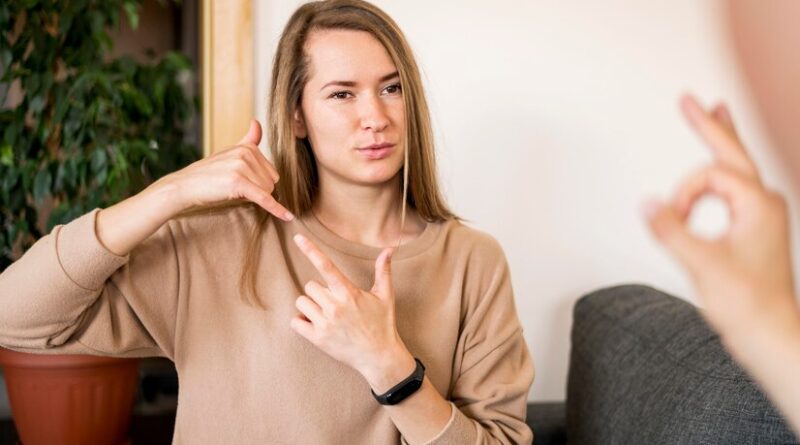Mastering the Art of Communicating with Deaf Individuals
Communicating effectively with deaf or hard-of-hearing individuals is an essential skill in fostering inclusivity and respect in all social interactions. It’s not just about the mode of communication; it’s about understanding, patience, and the willingness to adapt to ensure that the conversation is as smooth and respectful as possible. Whether you’re engaging in a casual chat, a professional meeting, or simply saying hello, knowing the correct way to communicate can make all the difference. Here’s how you can master this important skill.
- Use Visual Forms of Communication
Visual communication is key when interacting with deaf individuals. This can include sign language, writing notes, using text messages, or any form of visual aids. If you’re proficient in sign language, that’s fantastic! However, only some know sign language, so don’t be discouraged. Simple gestures or writing down what you want to say can be equally effective. The goal is to ensure the person you’re communicating with understands you, so find a method that works best for both of you.
- Gain Attention Respectfully
Before starting a conversation with a deaf person, it’s important to catch their attention in a manner that is respectful and not startling. A gentle wave in their line of sight or a light tap on the shoulder from a safe distance is usually appropriate. Avoid excessive tapping or waving, as this can be perceived as impatient or rude.
- Face the Person and Maintain Eye Contact
When you’re communicating, face the person directly and maintain eye contact. This is not just about politeness; it’s practical. Many deaf individuals rely on lip-reading and facial expressions to understand conversations better. By facing them and speaking clearly, you make it easier for them to follow along. Avoid covering your mouth or speaking while looking away.
- Be Mindful of the Environment
Background noise can be a significant barrier to communication for those who are hard of hearing. If you’re in a noisy place, try to move to a quieter location. Ensure there’s adequate lighting as well, so your face and lips are clearly visible. These small adjustments can significantly improve the quality of your conversation.

- Speak Clearly, Not Necessarily Louder
Shouting or exaggerating your words makes lip-reading more difficult. Speak in your normal tone, but enunciate your words more clearly than you might in regular conversation. Be prepared to repeat yourself if necessary, and stay calm if asked to do so. Patience is key.
- Learn Basic Sign Language
Investing time in learning basic sign language is not only a useful skill but also a sign of respect and effort toward better communication with deaf individuals. Start with simple greetings, common phrases, and useful vocabulary. There are numerous free resources and apps available that make learning sign language both accessible and enjoyable.
- Be Patient and Flexible
Not all deaf individuals communicate the same way. Some may prefer to lip-read, others may use sign language exclusively, and some may utilize a combination of methods. Be patient and flexible in finding a communication method that works best. If you need clarification, feel free to ask the person how they prefer to communicate. Learn the deaf culture and awareness training.
- Educate Yourself
Understanding deaf culture and etiquette is just as important as knowing how to communicate. Take the time to educate yourself about the deaf community’s norms and values. This not only enhances communication but also builds a deeper sense of respect and empathy.

Conclusion
Communicating with deaf or hard-of-hearing individuals doesn’t have to be daunting. With a little patience, understanding, and flexibility, you can ensure that your interactions are respectful and inclusive. Remember, effective communication is about making an effort to understand and be understood, regardless of the method used. By adopting these practices, you’re not just facilitating smoother conversations; you’re also contributing to a more inclusive and understanding world.

